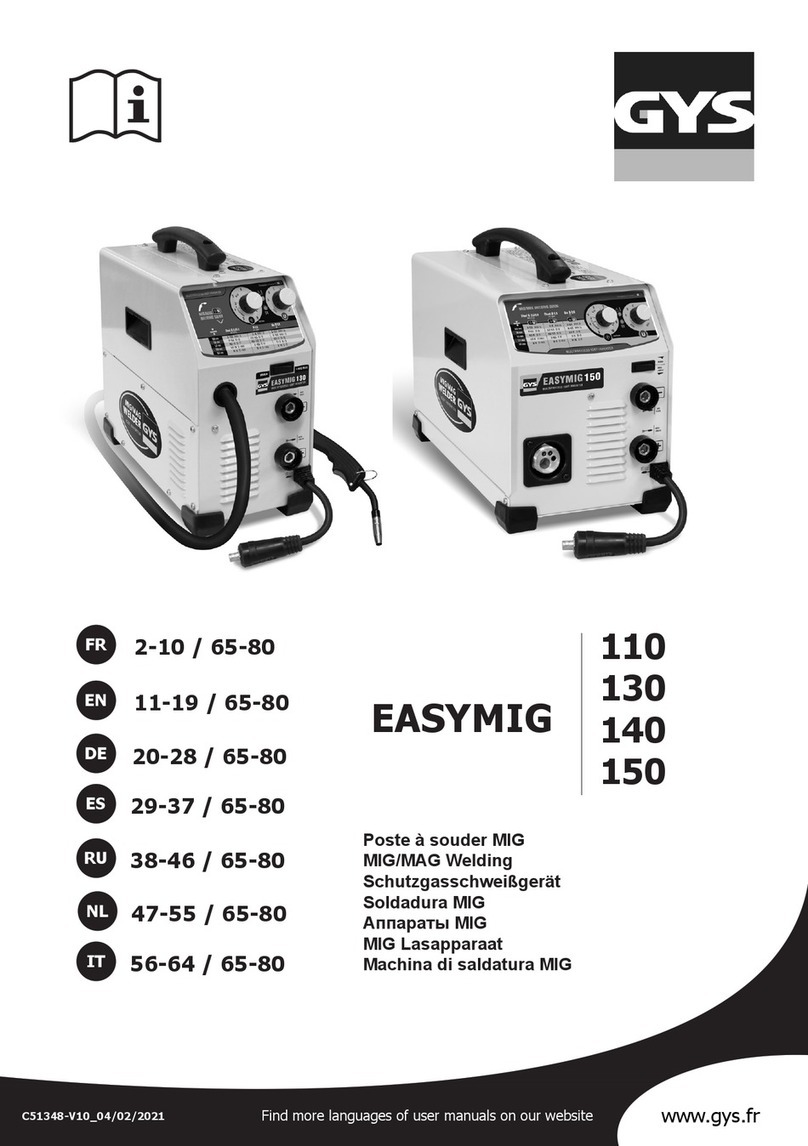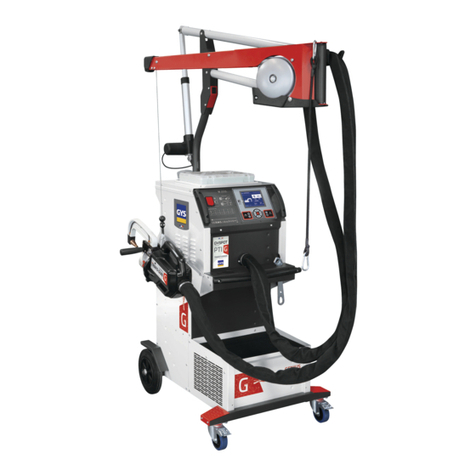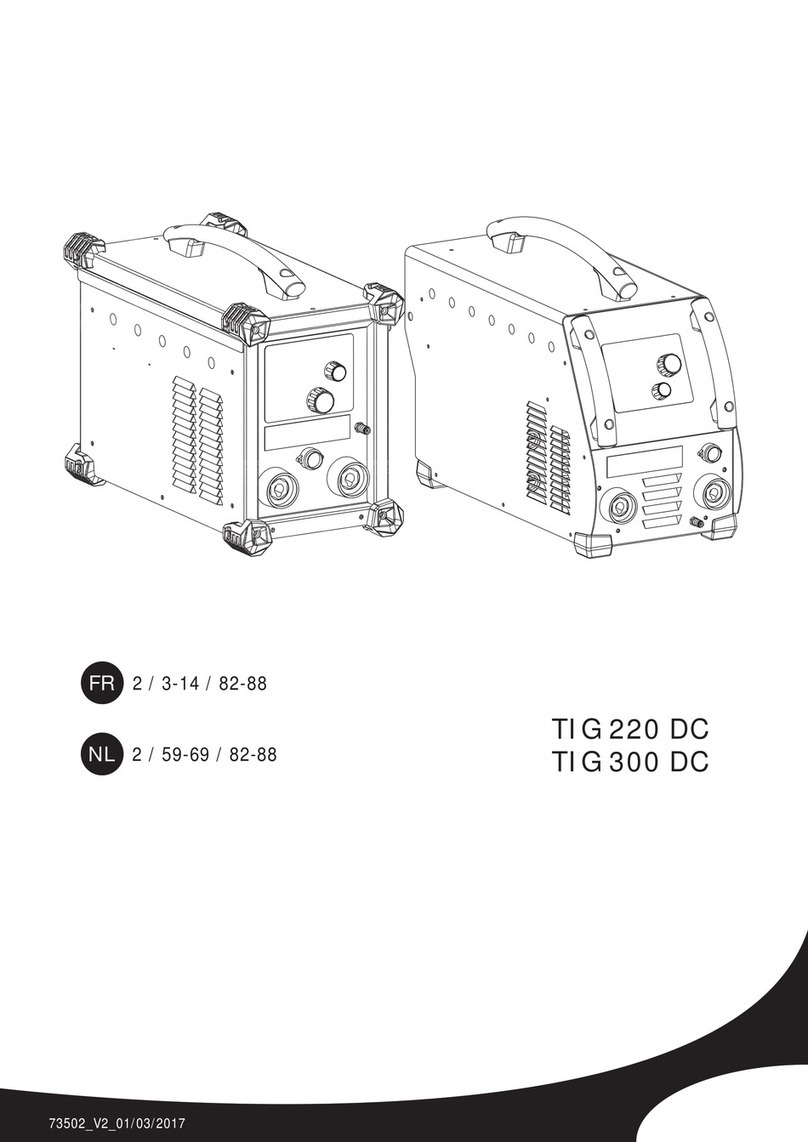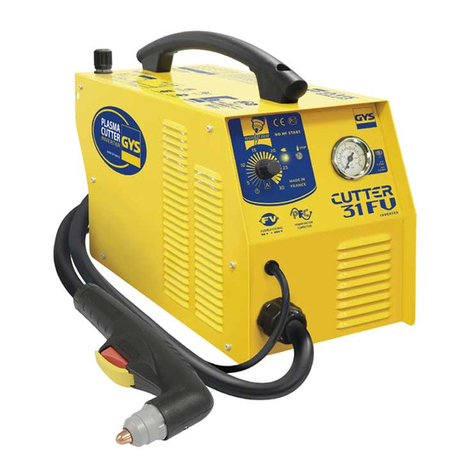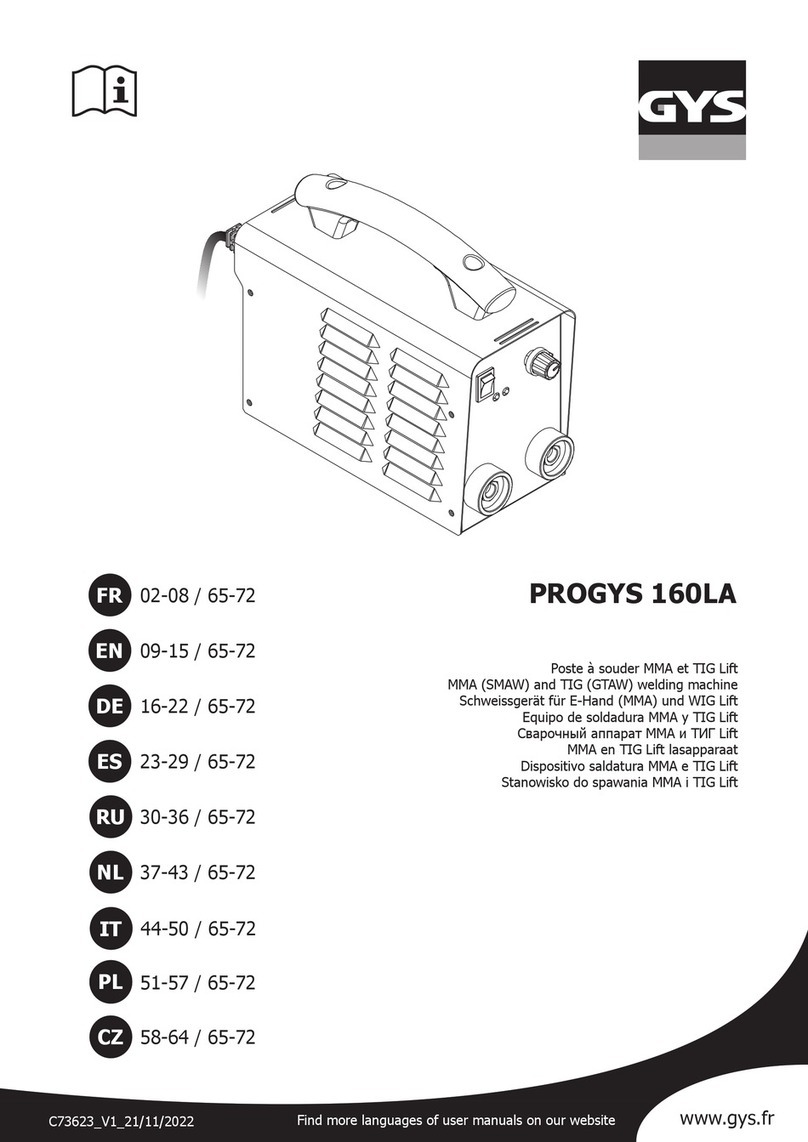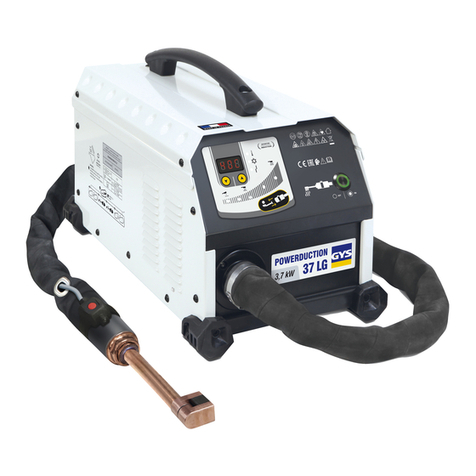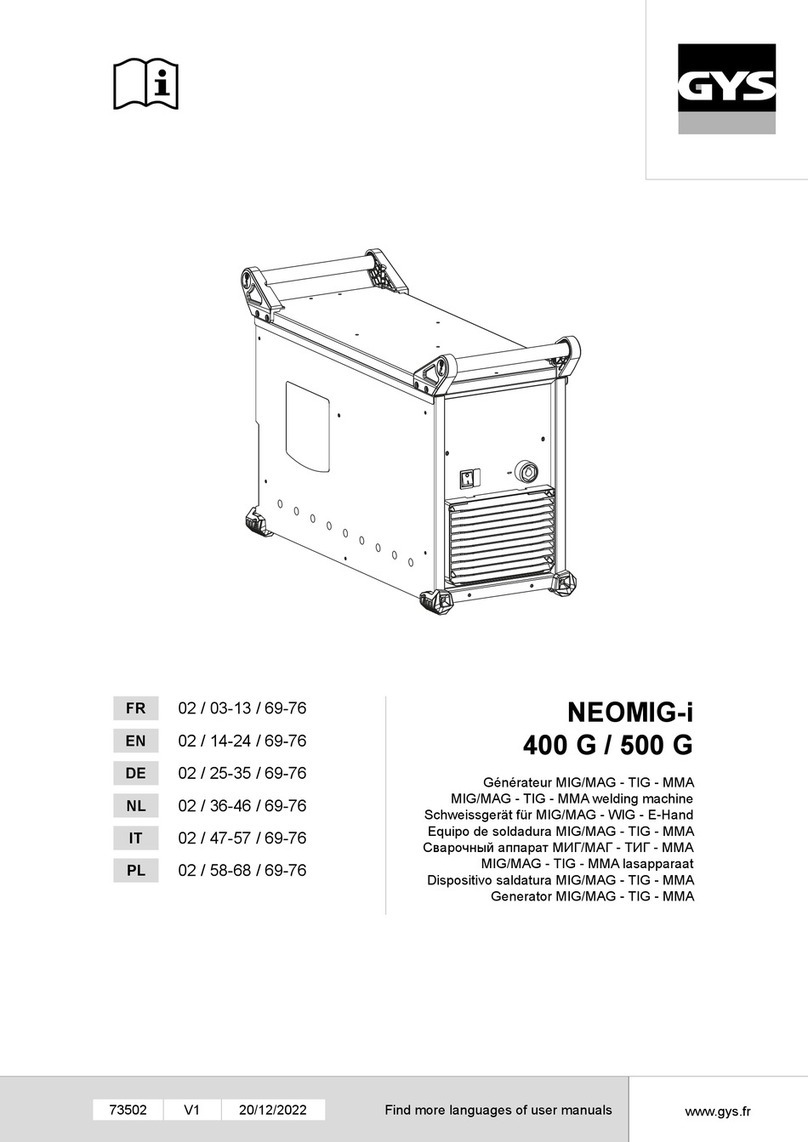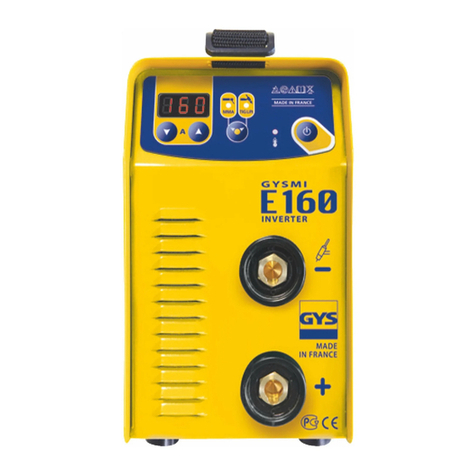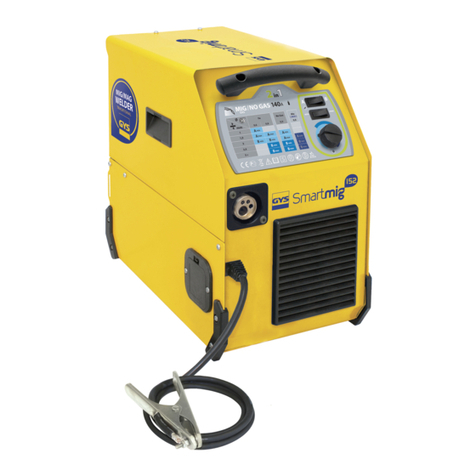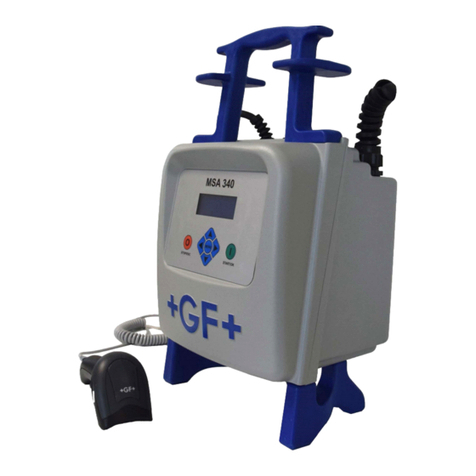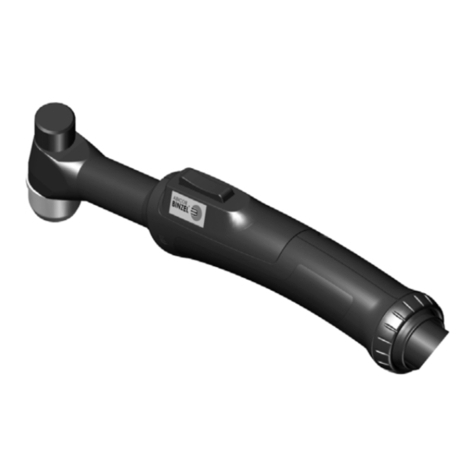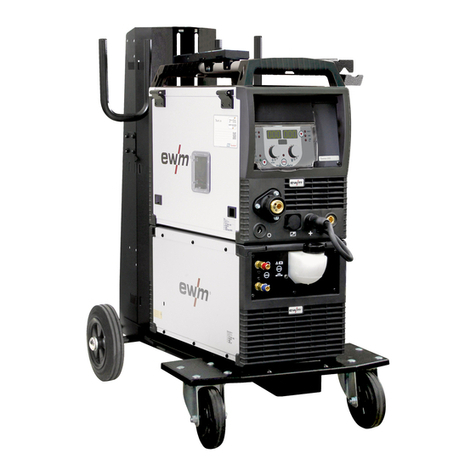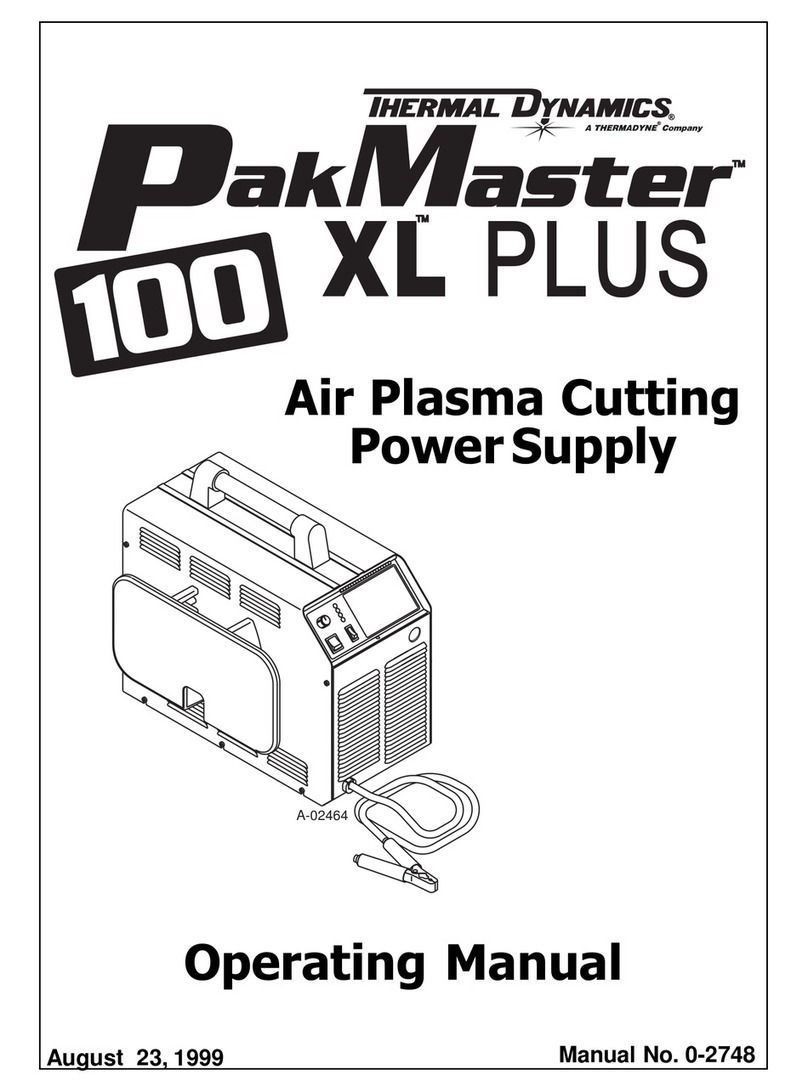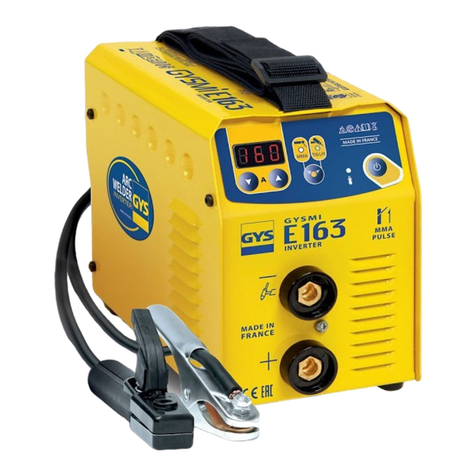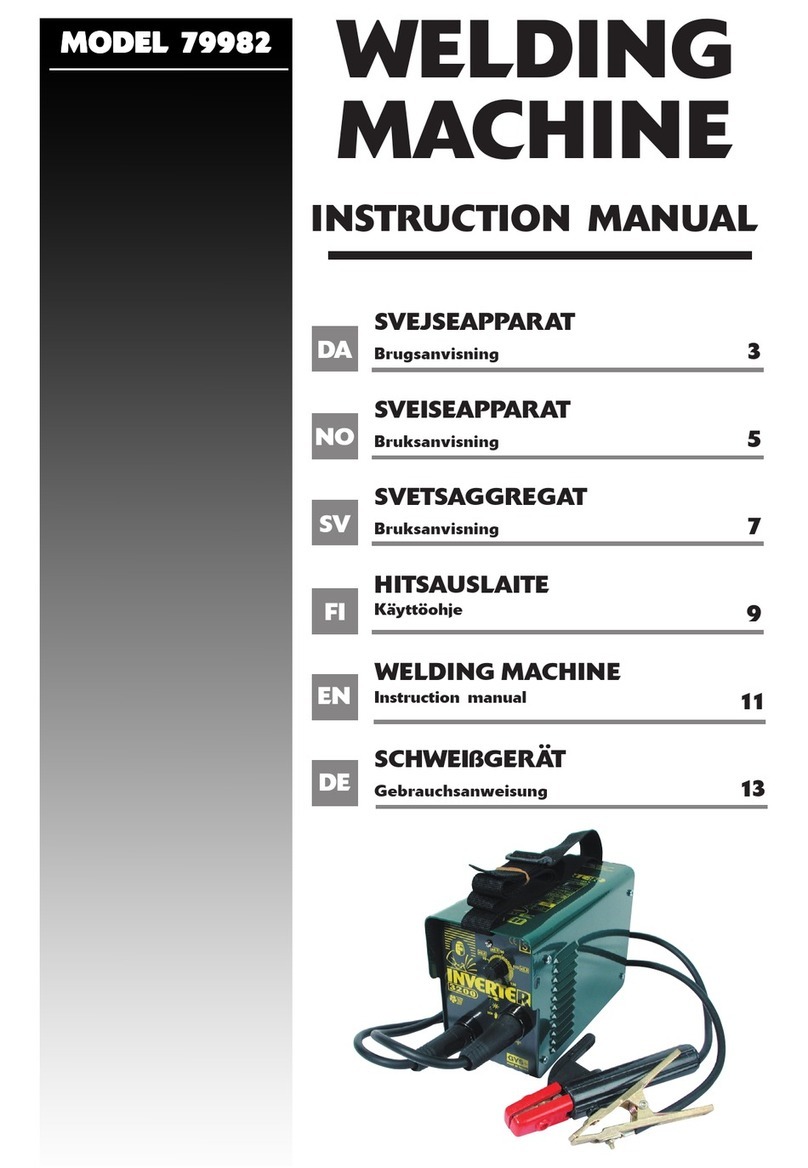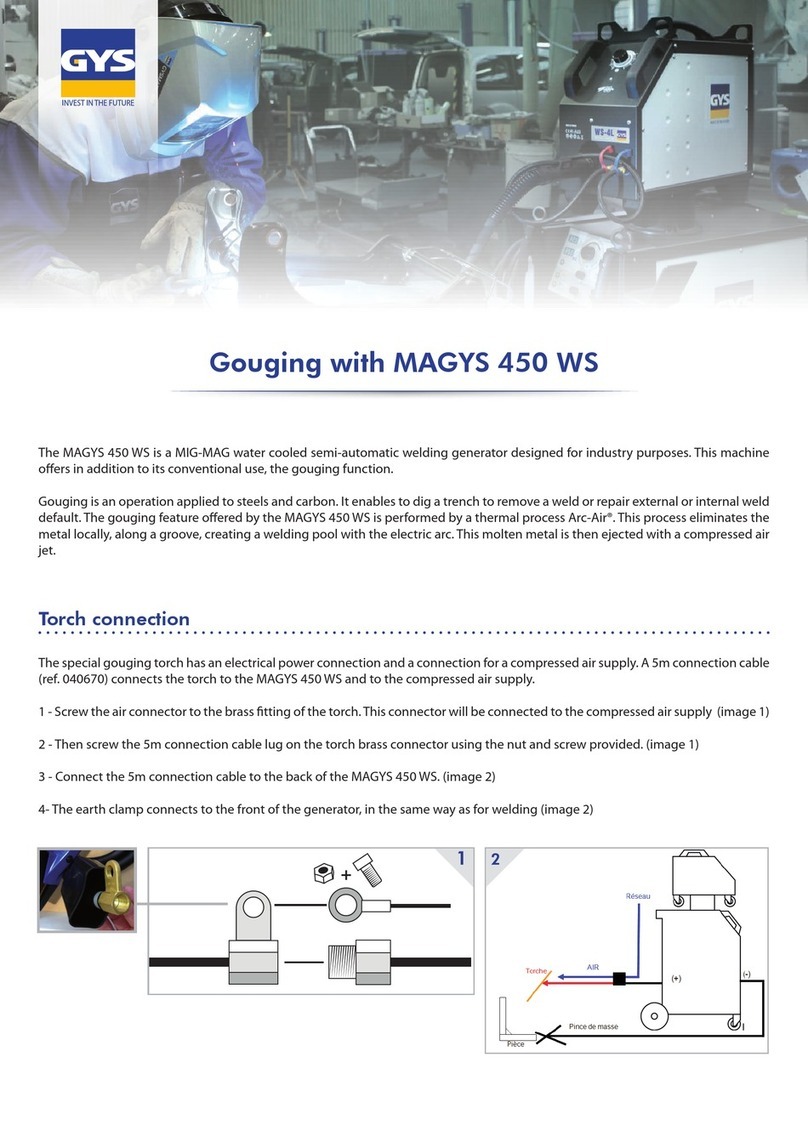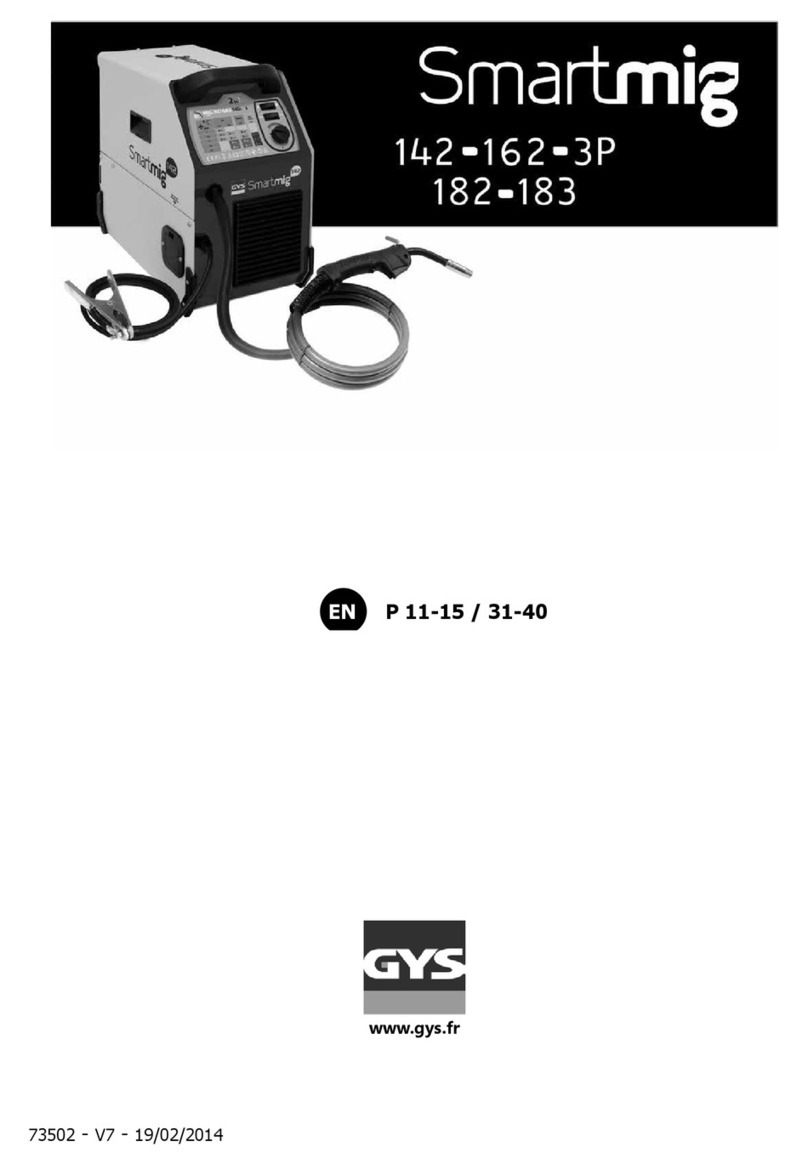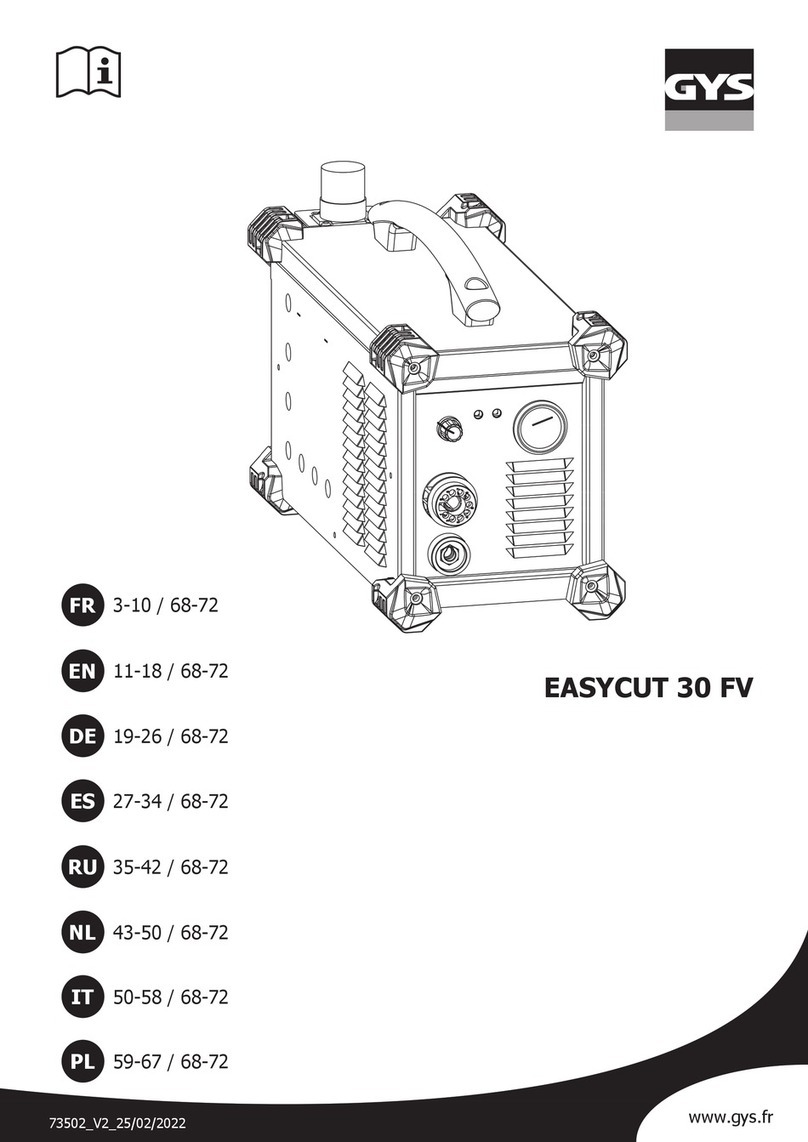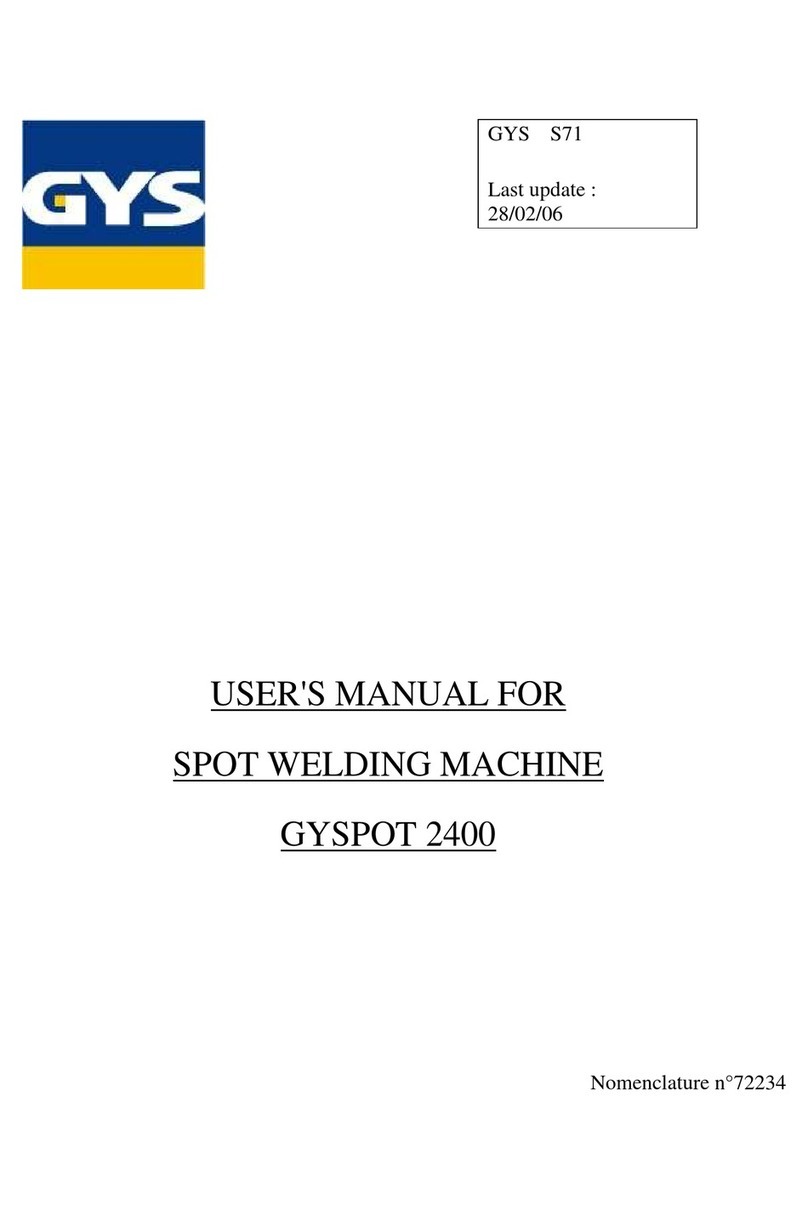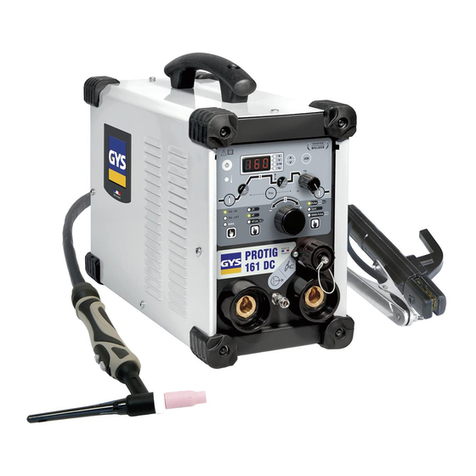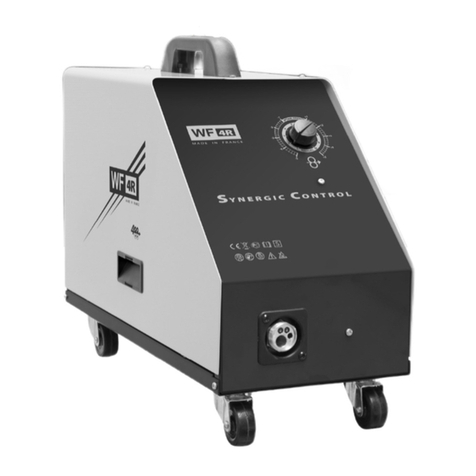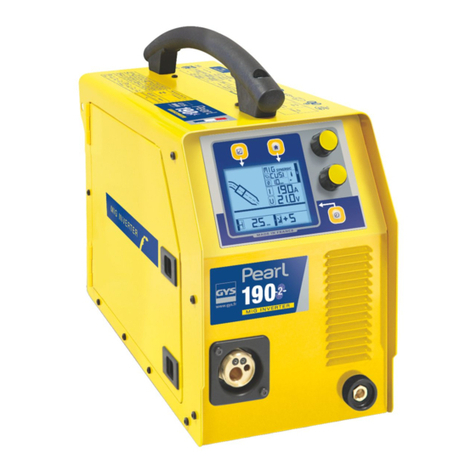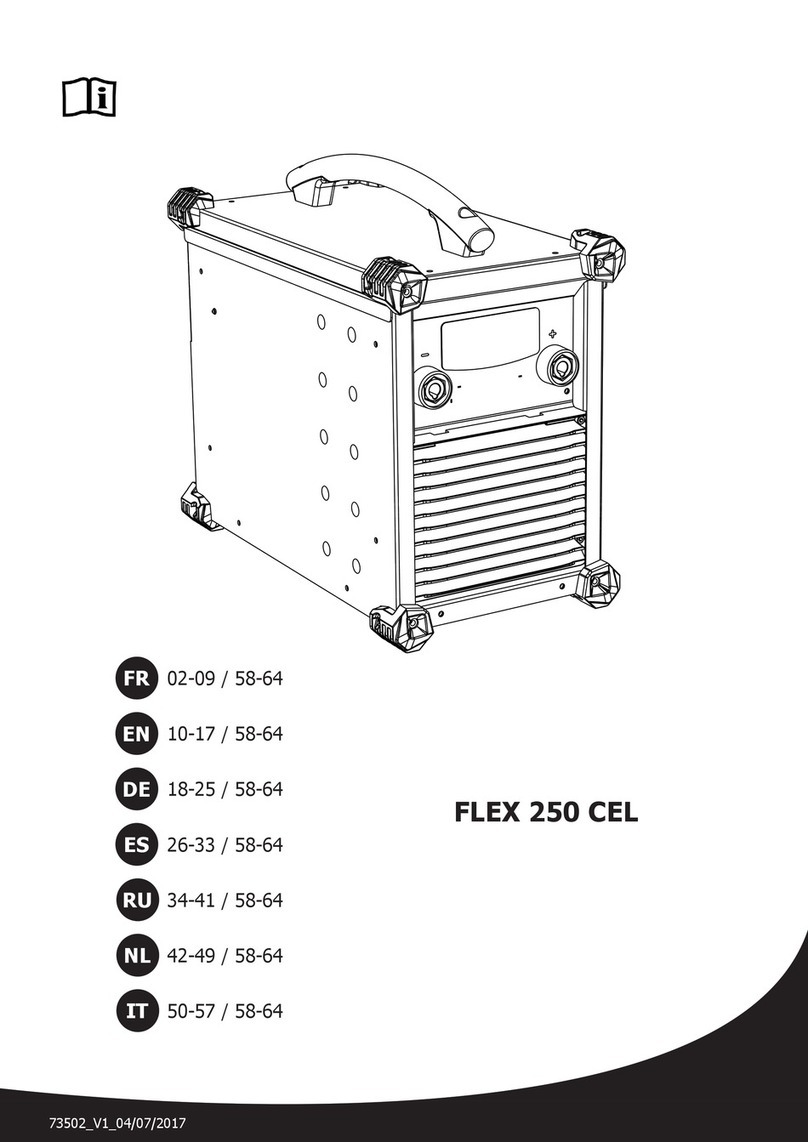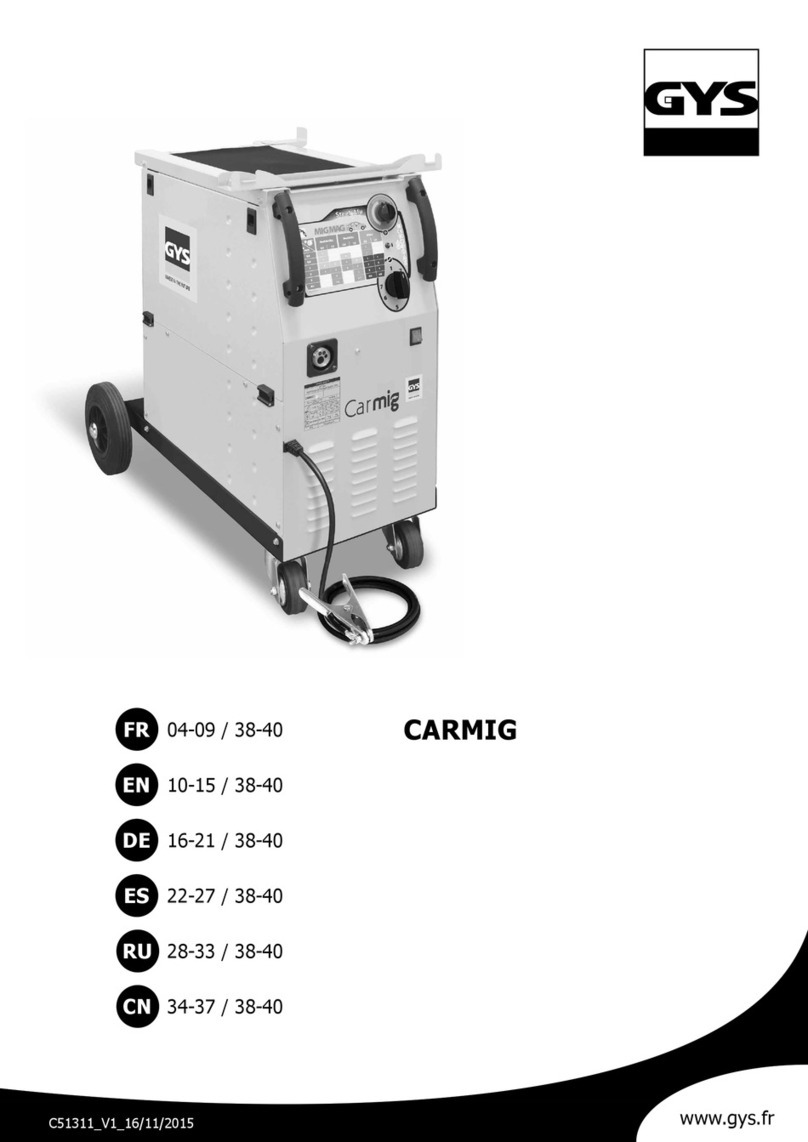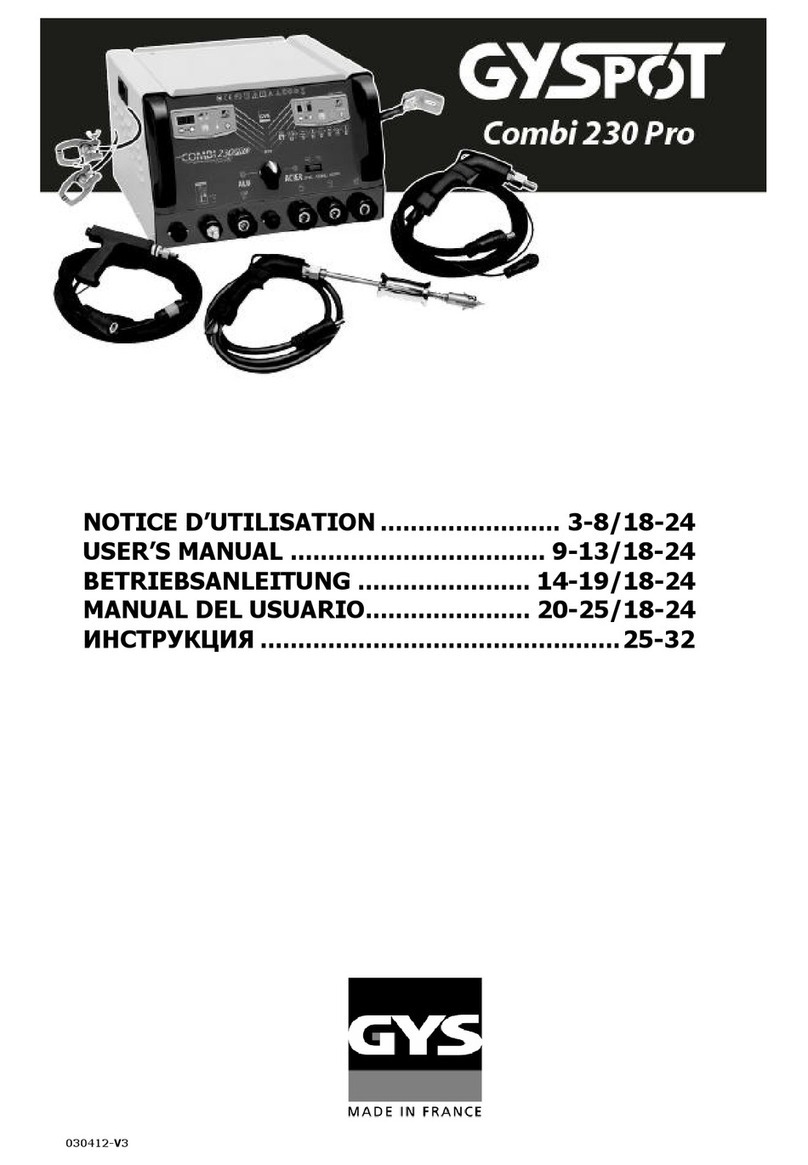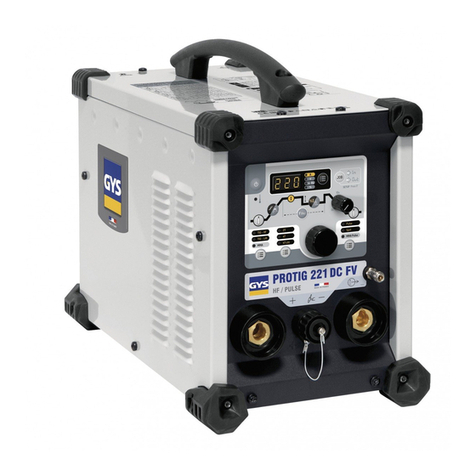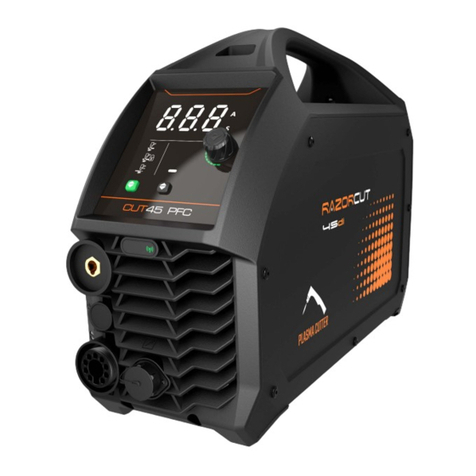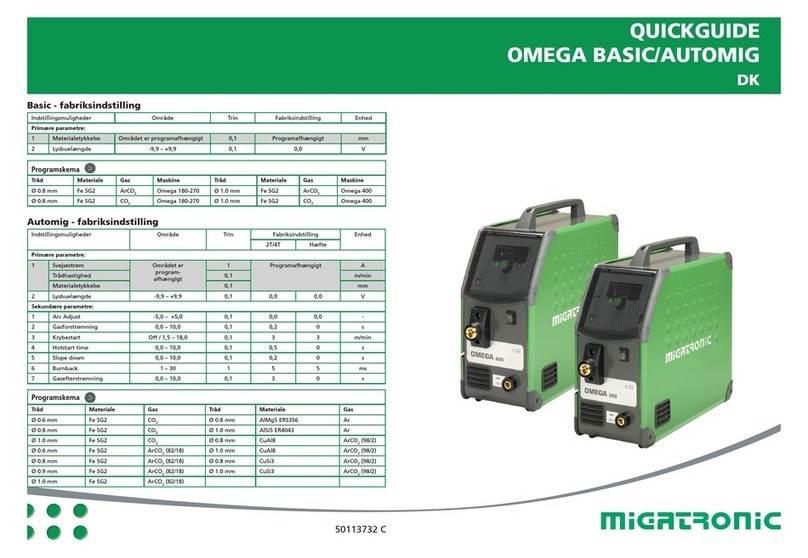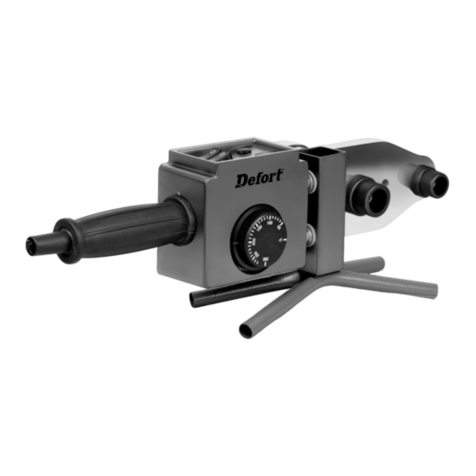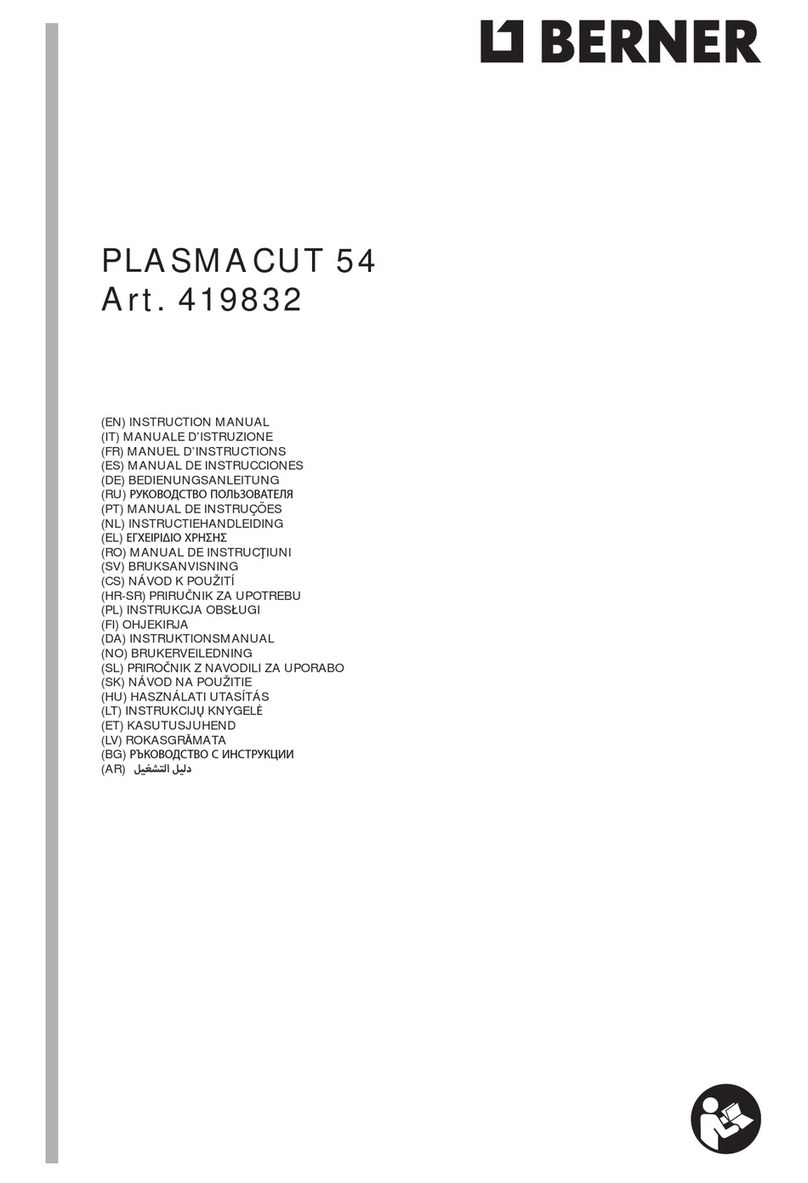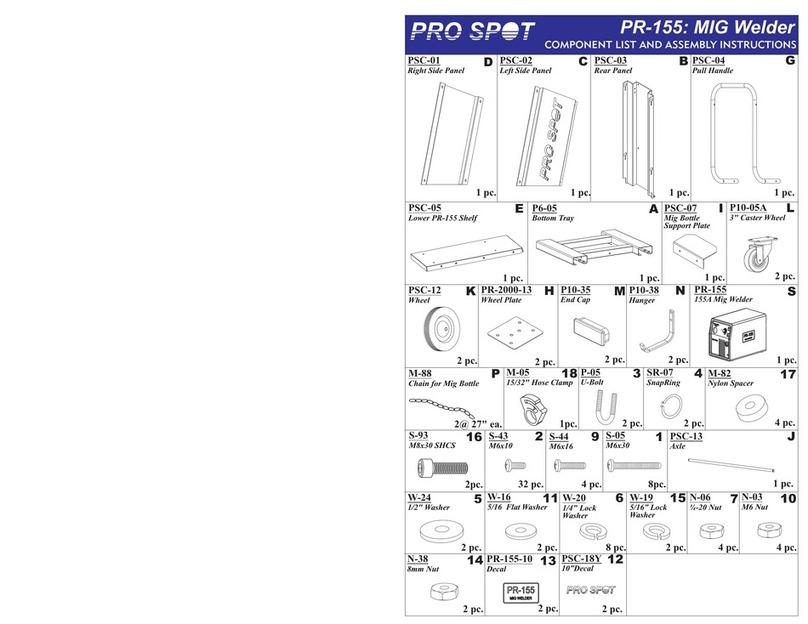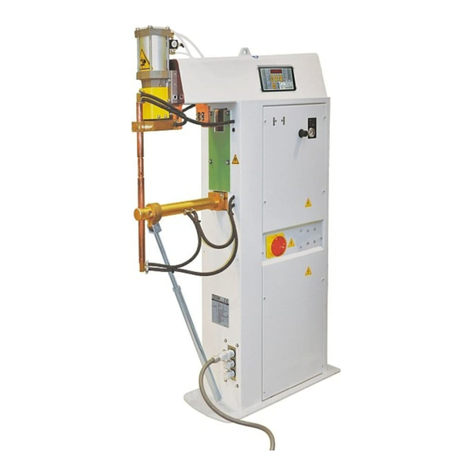
10
MODE SPOT
Cette fonction permet de réaliser des trava x de pointage.
Po r aj ster la d rée d point, tiliser le potentiomètre.
MODE DELAY
Po r effect er vos trava x en « points de chaînette », aj ster le potentiomètre.
Cette fonction permet de so der des tôles très fines en acier o en al mini m, en limitant le risq e de
perçage et de déformation de la tôle (s rto t po r le so dage al mini m).
SPOOL GUN
PRESENTATION ET FONCTIONNEMENT TORCHE SPOOL GUN
• La torche spool g n se monte s r le connecte r de la torche T1.
• Le spool g n fonctionne soit en mode « Man el », soit en mode
« Synergic ».
• En mode man el o en mode « Synergic », se l le bo ton de réglage de
vitesse fil déporté s r la torche est actif (le potentiomètre vitesse fil d
poste est inactif).
• Mode « Synergic » :
-Placer le bo ton de vitesse fil de la torche a centre de sa plage p is
aj ster si nécessaire.
-Po r pl s d’informations s r le mode « Synergic » se référer à la page 9.
PROCEDURE DE MONTAGE
Bobine
O vrir le capot
Enlever l’écro de maintien (nb. : pas de vis inversé)
Serrer l’écro frein afin de bomber l’axe bobine (ne pas trop serrer)
Insérer votre bobine
Po r insérer le fil dans les galets appliq er ne pression s r la « vis de réglage tension galets »
Torche • Retirer le fil de la torche T1 en enro lant la bobine.
• Retirer la torche T1
• Brancher le connecte r de p issance d spool g n s r le connecte r T1.
• Brancher le connecte r de commande d spool g n
• Basc ler le comm tate r s r T1.
CONSEILS ET PROTECTION THERMIQUE
•Respecter les règles classiq es d so dage.
•Laisser les o ïes de l'appareil libres po r l’entrée et la sortie d’air.
•Laisser l’appareil branché après so dage po r permettre le refroidissement.
•Protection thermiq e : le voyant s’all me et la d rée de refroidissement est de q elq es min tes en fonction
de la températ re ambiante.
Bo ton d’o vert re/fermet re capot
Ecro de serrage bobine
Écro frein bobine (ne pas trop serrer)
Vis de réglage de tension des galets
Bo ton de réglage de vitesse fil
